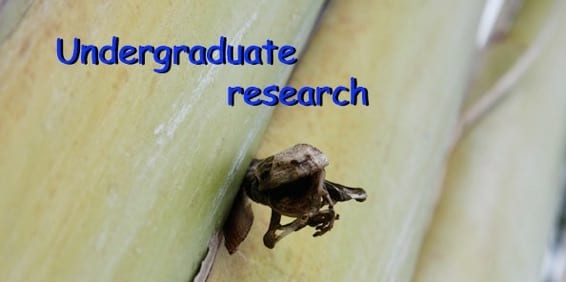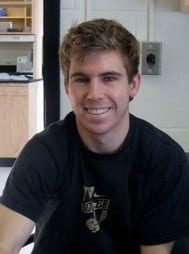 Derek joined the Calsbeek lab as a Howard Hughes Medical Institute researcher to test the role of testosterone as it regulates performance and behavioral interactions in male anoles. Derek’s work was published in Physiological and Biochemical Zoology and his research also contributed to a second article showing that testosterone stimulates growth in brown anoles. This study was published in the Journal of Evolutionary Biology.
Derek joined the Calsbeek lab as a Howard Hughes Medical Institute researcher to test the role of testosterone as it regulates performance and behavioral interactions in male anoles. Derek’s work was published in Physiological and Biochemical Zoology and his research also contributed to a second article showing that testosterone stimulates growth in brown anoles. This study was published in the Journal of Evolutionary Biology.
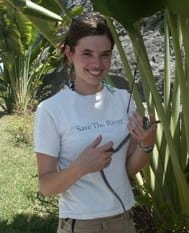 Diane worked extensive on animal husbandry in our captive anole breeding facility at Dartmouth. In the fall of 2008, Diane traveled to our field sites in The Bahamas, where she conducted immune assays to determine whether reproductive investment compromises immune function. This physiological cost of reproduction could potentially explain why reproductive females suffer such high mortality in the wild.
Diane worked extensive on animal husbandry in our captive anole breeding facility at Dartmouth. In the fall of 2008, Diane traveled to our field sites in The Bahamas, where she conducted immune assays to determine whether reproductive investment compromises immune function. This physiological cost of reproduction could potentially explain why reproductive females suffer such high mortality in the wild.
 Sam joined the Calsbeek lab as part of the Women in Science Program (WISP) at Dartmouth. During her time in the lab, Sam learned molecular genetic techniques involved in studying population structure and for use in paternity analyses. Sam spent four years at Dartmouth working in our laboratory and is now studying Veterinary medicine at UC Davis.
Sam joined the Calsbeek lab as part of the Women in Science Program (WISP) at Dartmouth. During her time in the lab, Sam learned molecular genetic techniques involved in studying population structure and for use in paternity analyses. Sam spent four years at Dartmouth working in our laboratory and is now studying Veterinary medicine at UC Davis.
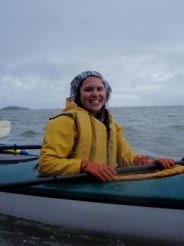 Libby joined the lab as part of the Howard Hughes Medical Institute program for undergraduates. Her work focused on the potential importance of trade-offs between reproductive investment and parasite load. Her work has demonstrated an important link between the degree to which females invest in reproduction and the number of blood borne pathogens they carry. Libby’s work is part of a larger study that is currently submitted for publication. Libby’s current research continues in the form of a Presidential research scholarship through Dartmouth College and this work will take her to The Bahamas to include a field component this Fall.
Libby joined the lab as part of the Howard Hughes Medical Institute program for undergraduates. Her work focused on the potential importance of trade-offs between reproductive investment and parasite load. Her work has demonstrated an important link between the degree to which females invest in reproduction and the number of blood borne pathogens they carry. Libby’s work is part of a larger study that is currently submitted for publication. Libby’s current research continues in the form of a Presidential research scholarship through Dartmouth College and this work will take her to The Bahamas to include a field component this Fall.
 Kelsey worked with the Calsbeek lab studying Salamander and Frog morphogenesis. She learned the rigors of field work while testing the importance of predation pressures to the patterns of metamorphosis in amphibians that either keep (salamander) or resorb (frog) their tails when turning in to adults.
Kelsey worked with the Calsbeek lab studying Salamander and Frog morphogenesis. She learned the rigors of field work while testing the importance of predation pressures to the patterns of metamorphosis in amphibians that either keep (salamander) or resorb (frog) their tails when turning in to adults.
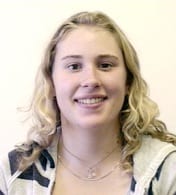 Ari volunteered on the Salamander and Frog morphogenesis project. She tested the importance of predation pressures to the patterns of metamorphosis in amphibians that either keep (salamander) or resorb (frog) their tails when turning in to adults.
Ari volunteered on the Salamander and Frog morphogenesis project. She tested the importance of predation pressures to the patterns of metamorphosis in amphibians that either keep (salamander) or resorb (frog) their tails when turning in to adults.
